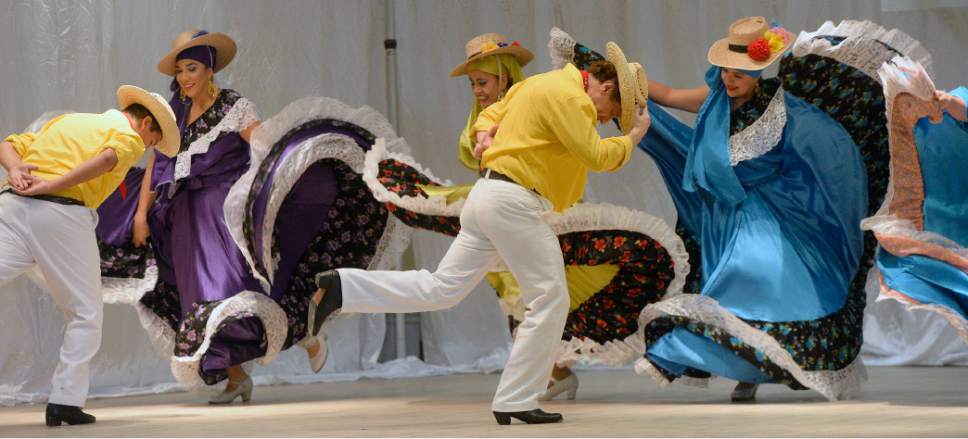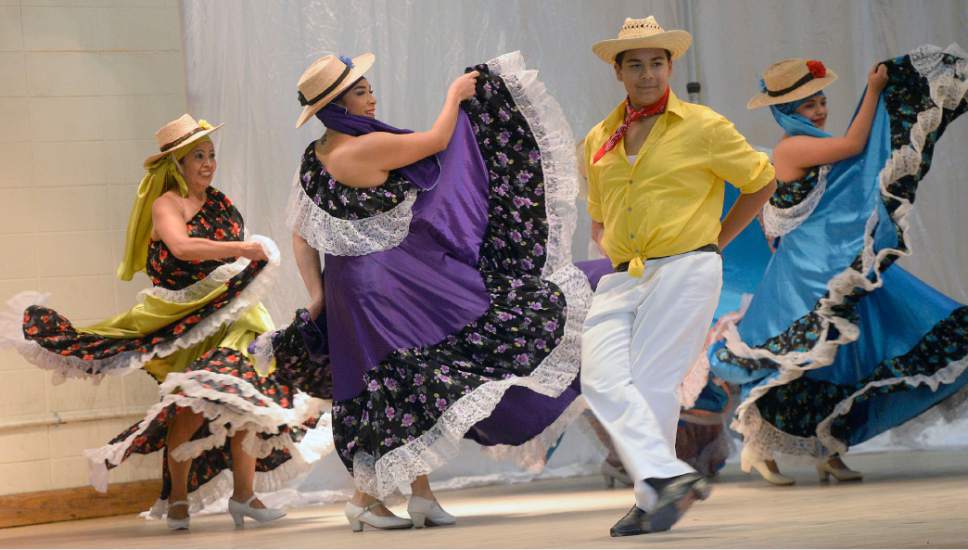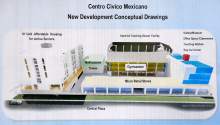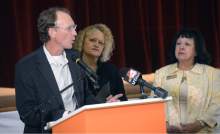This is an archived article that was published on sltrib.com in 2016, and information in the article may be outdated. It is provided only for personal research purposes and may not be reprinted.
The bright future of Centro Civico Mexicano — founded in 1935 — was unveiled Tuesday with a planned development to replace the aging gathering place of Salt Lake City's Latino community.
The project at 155 S. 600 West — estimated at $15 million or more — would include a multipurpose theater, gym, open-air teaching/soccer facility, gallery, classrooms, day-care center and 60 affordable housing units for seniors. Also in the plan is a row of micro-retail stores.
It is being made possible, in part, by an Environmental Protection Agency grant of $200,000 and a matching amount from Salt Lake County.
Both sums come from the EPA's Brownfields grant program aimed at cleaning up environmental contamination in order to make way for community development.
Removal of contaminated soils on the site will begin this winter. Construction of an affordable-housing complex will follow next summer, said Brandy Farmer, president and CEO of Centro Civico Mexicano. The organization's home is in the heart of the Depot District west of The Gateway mall and north of the TRAX Salt Lake Central Station. It also is within a designated Salt Lake City Redevelopment Agency zone.
"This is an area in desperate need of revitalization," said Mayor Jackie Biskupski. "[But] it is poised to be one of Salt Lake City's great neighborhoods."
EPA Region 8 administrator Shaun McGrath said the Brownfields program helps overcome impediments to improving communities. The investments provide localities with funding necessary to assess, clean up and redevelop contaminated properties. That fosters a boost in jobs and local economies, while protecting public health and the environment, he said.
McGrath credited state, county and municipal leaders for cooperating on the Centro Civico project and providing vision for the future.
"It is particularly rewarding for EPA to be part of this project," he said. "This will have a positive impact on the Latino community and this neighborhood for generations."
Centro Civico is a vital organization for the Latino community, which makes up 17 percent of Salt Lake County's population, said Stuart Clason, director of regional economic development for Salt Lake County. The new facility not only will support them but also will add to the blossoming Depot District.
"It's going to be exciting to see this whole community transformed," he said.
Centro Civico Mexicano is the oldest Hispanic organization in Utah, established in 1935 by immigrants from Mexico, Farmer said, seeing it as a symbol of the spirit of Mexicans who came to America with 'orgullo,' proud to be Mexican, yet prepared to contribute to their adopted homeland.
"The migration was stimulated by the start of World War I that reduced the number of laborers working on the railroads and mines," she said. "Realizing they missed their culture, they needed a place of their own to celebrate their traditions and to work on social justice issues."
Peter Corroon, a former Salt Lake County mayor who is consulting with Centro Civico, said the federal grants are an important first step in a complex process. One of the next moves is for Centro Civico to apply for tax credits from the Utah Housing Coalition. That, he said, will make fundraising easier.
EPA Region 8 has awarded more than $3.3M in 2016 Brownfields grants for projects in Colorado, Montana, North Dakota, South Dakota, Utah and Wyoming, McGrath said.
Since the inception of the EPA's Brownfields Program in 1995, cumulative investments have leveraged more than $20 billion from a variety of public and private sources for cleanup and redevelopment activities.









